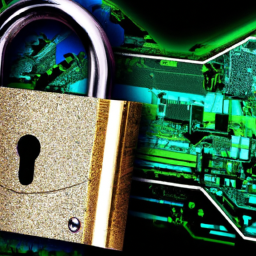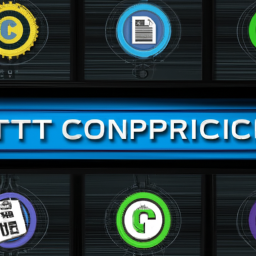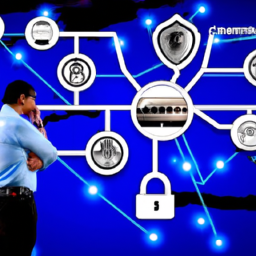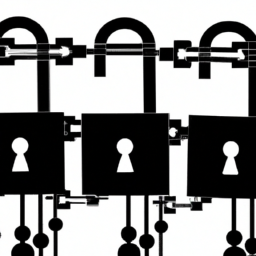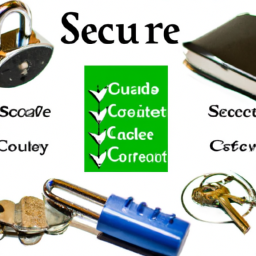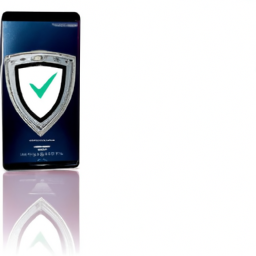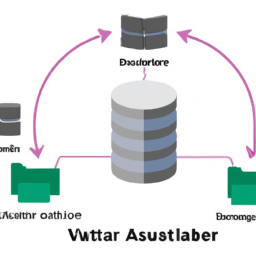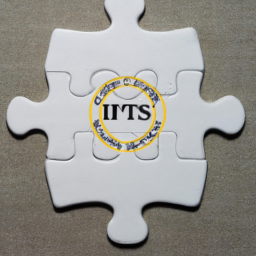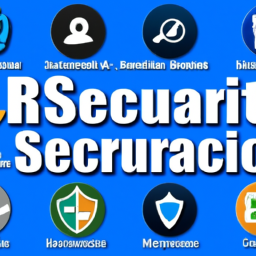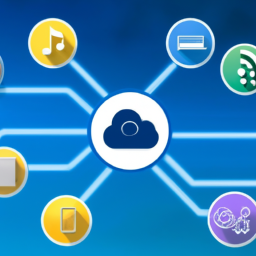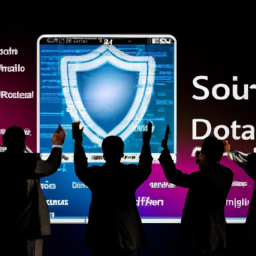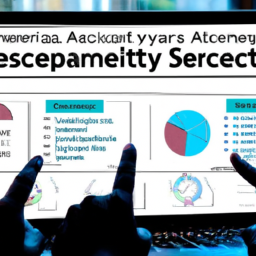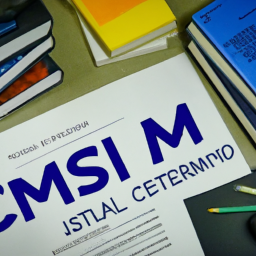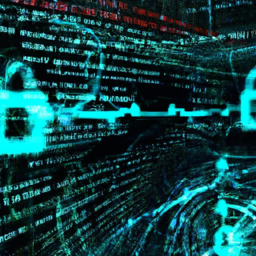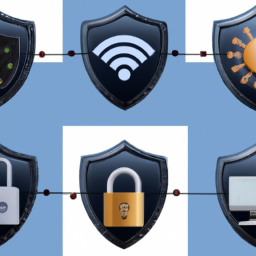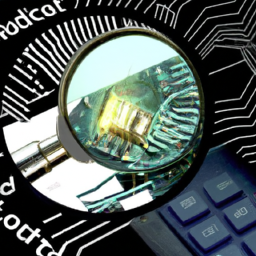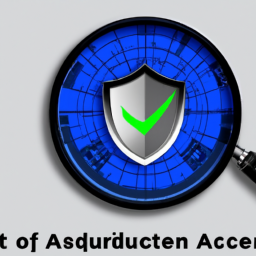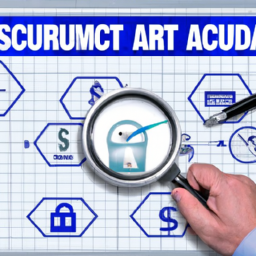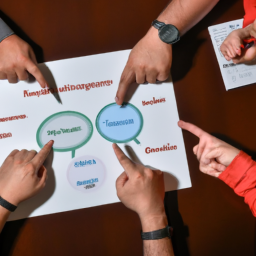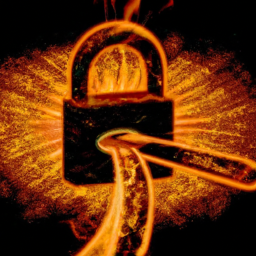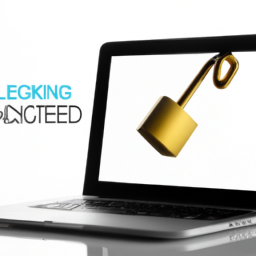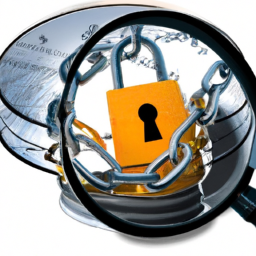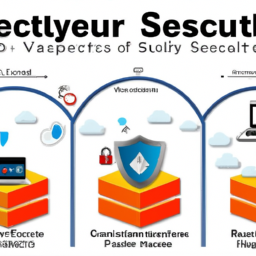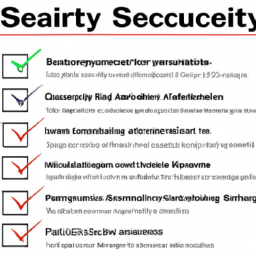In today’s interconnected world, where cyber threats are lurking around every corner, it is crucial to build a robust and effective security audit architecture. Just like a fortress protecting its inhabitants from external threats, your security audit architecture should serve as an impenetrable shield for your organization’s sensitive data and valuable assets.
Think of it as the watchful eyes and sturdy gates that keep potential intruders at bay. By implementing a comprehensive security audit architecture, you can identify and address security risks and vulnerabilities, establish clear policies and procedures, and ensure that access controls and authentication measures are in place.
This proactive approach allows you to monitor and detect security incidents in real-time, giving you the power to respond swiftly and effectively when faced with potential threats.
However, building an effective security audit architecture is not a one-time task. It requires regular audits and assessments to stay ahead of evolving threats. By continuously improving and updating your security measures, you can fortify your organization’s defenses and safeguard it against the ever-changing landscape of cyber threats.
In this article, we will guide you through the process of building an effective security audit architecture, equipping you with the knowledge and tools to protect your organization from potential breaches and attacks.
Key Takeaways
- Building a robust and effective security audit architecture is crucial in today’s interconnected world to protect sensitive data and valuable assets.
- Continuous improvement and updating of security measures, such as thorough risk assessments and vulnerability management programs, are essential to identify and address security risks and vulnerabilities promptly.
- Establishing security policies and procedures, clear roles and responsibilities for security management, and implementing security training programs for employees are important steps in mitigating risks and protecting assets.
- Real-time monitoring and detection systems, along with incident response plans and procedures, play a vital role in minimizing the impact of security incidents and continuously improving security measures.
Identify Security Risks and Vulnerabilities
Identifying security risks and vulnerabilities is crucial in building an effective security audit architecture. To ensure the security of your organization’s systems and data, conducting a thorough security risk assessment is essential.
This involves identifying potential threats, vulnerabilities, and weaknesses in your infrastructure, applications, and processes. By evaluating your network, hardware, software, and user practices, you can pinpoint areas that are susceptible to attacks or breaches.
Once you have identified the risks and vulnerabilities, the next step is to implement a robust vulnerability management program. This involves regularly scanning and testing your systems for vulnerabilities, prioritizing them based on their severity, and addressing them promptly. By proactively managing vulnerabilities, you can reduce the chances of a successful security breach.
With a solid understanding of your organization’s security risks and vulnerabilities, you can establish security policies and procedures that effectively mitigate these risks and protect your valuable assets.
Establish Security Policies and Procedures
When establishing security policies and procedures, you need to develop and implement them effectively to ensure the protection of your organization’s assets.
This involves defining clear roles and responsibilities for security management, and assigning specific tasks and accountabilities to individuals or teams.
Additionally, it’s crucial to regularly review and update security policies to keep up with evolving threats and industry best practices. This ensures that your organization remains well-prepared and resilient against potential breaches.
Develop and implement security policies and procedures
To create a solid foundation for a security audit architecture, it’s crucial to establish and enforce security policies and procedures. These policies and procedures act as the glue that holds the entire system together.
Developing and implementing security policies and procedures is essential in ensuring that all employees understand their roles and responsibilities in maintaining the security of the organization. To achieve this, consider the following steps:
-
Develop and implement security training programs: Educate employees on best practices for handling sensitive data, identifying and reporting security incidents, and understanding the importance of following security policies and procedures.
-
Establish incident response teams: Define roles and responsibilities for responding to security incidents promptly and effectively, including incident detection, containment, eradication, and recovery.
-
Regularly review and update policies and procedures: Security threats and technologies are constantly evolving, so it’s crucial to regularly review and update security policies and procedures to address new risks.
-
Provide ongoing communication and awareness: Continuously communicate and reinforce security policies and procedures through various channels to ensure that employees are always aware of their responsibilities.
By developing and implementing comprehensive security policies and procedures, organizations can create a strong foundation for their security audit architecture. This ensures that all employees are well-prepared and capable of effectively responding to security incidents, ultimately reducing the risk of data breaches and other security issues.
Moving forward, it’s important to define roles and responsibilities for security management to further strengthen the security audit architecture.
Define roles and responsibilities for security management
Establishing clear roles and responsibilities for managing security is crucial for ensuring a well-organized and proactive approach to safeguarding organizational assets.
To define security roles, responsibilities, and governance, it’s essential to assess the specific needs and requirements of the organization. This involves identifying key personnel who’ll be accountable for various aspects of security management, such as incident response, security operations, and policy enforcement.
Effective management of security operations involves assigning responsibilities for monitoring security systems, conducting vulnerability assessments, and implementing proactive security measures.
Incident response responsibilities should be clearly defined, outlining the actions to be taken in the event of a security breach or incident.
By clearly defining roles and responsibilities, organizations can streamline security operations, enhance accountability, and improve incident response capabilities. This ensures that security measures are consistently enforced and aligned with industry best practices, providing a robust defense against potential threats.
Transitioning to the subsequent section, regularly reviewing and updating security policies is essential to maintain this strong security posture.
Regularly review and update security policies to align with industry best practices
Regularly reviewing and updating security policies ensures that organizations stay up-to-date with industry best practices, creating a dynamic defense against potential threats. Here are four key reasons why reviewing security policies is crucial:
-
Stay compliant: Regularly reviewing security policies helps organizations ensure that they are in line with industry standards and regulatory requirements. By staying compliant, organizations can avoid penalties and legal issues.
-
Identify vulnerabilities: By reviewing security policies, organizations can identify any gaps or weaknesses in their current security measures. This allows them to address these vulnerabilities and strengthen their defense against potential threats.
-
Adapt to emerging threats: The cybersecurity landscape is constantly evolving, with new threats emerging every day. By reviewing security policies, organizations can stay informed about the latest threats and adjust their policies accordingly to mitigate risks.
-
Enhance employee awareness: Regularly reviewing security policies provides an opportunity to educate employees about the importance of cybersecurity and reinforce best practices. This helps create a security-conscious culture within the organization.
By regularly reviewing and updating security policies, organizations can ensure their defense mechanisms are aligned with industry best practices. This sets the foundation for the subsequent section about implementing access controls and authentication measures.
Implement Access Controls and Authentication Measures
By implementing access controls and authentication measures, you can ensure the proper safeguarding of sensitive information and protect against unauthorized access. One effective method is implementing multifactor authentication, which requires users to provide multiple forms of identification before accessing sensitive data. This can include something they know (like a password), something they have (like a smart card), or something they are (like a fingerprint). By requiring multiple factors, you add an extra layer of security, making it more difficult for unauthorized individuals to gain access. Additionally, securing remote access is crucial in today’s interconnected world. This can be achieved by using virtual private networks (VPNs) and strong encryption techniques to protect data transmitted over the internet. By following these practices, you can significantly reduce the risk of unauthorized access and protect your organization’s sensitive information. Now, let’s transition into the subsequent section about monitoring and detecting security incidents.
Monitor and Detect Security Incidents
In order to effectively monitor and detect security incidents, you need to implement a system that allows for real-time monitoring and detection. This can be achieved by using intrusion detection systems and security information and event management (SIEM) tools.
Additionally, it’s crucial to develop incident response plans and procedures to ensure a prompt and efficient response to any security incidents that occur. By following these key points, you’ll be able to proactively identify and address security threats, minimizing the potential impact on your organization.
Implement a system for real-time monitoring and detection of security incidents
Unbelievably, you’ll be able to catch security incidents as they happen by implementing a system for real-time monitoring and detection. This system will enable you to respond to security incidents in real time, minimizing the potential damage and reducing the impact on your organization.
Here are four key steps to implement a system for real-time monitoring and detection:
-
Set up monitoring tools: Install and configure monitoring tools that enable real-time monitoring of your network, systems, and applications.
-
Establish real-time response procedures: Develop clear and concise procedures for responding to security incidents in real time. This includes defining roles and responsibilities, establishing communication channels, and outlining escalation procedures.
-
Conduct security incident analysis: Continuously analyze security incidents in real time to identify patterns, trends, and indicators of compromise. This will help you detect and respond to emerging security threats promptly.
-
Automate incident detection and response: Leverage automation capabilities to enhance incident detection and response. This includes implementing automated alerting, threat intelligence integration, and automated incident response actions.
By implementing a system for real-time monitoring and detection, you’ll be better equipped to detect, analyze, and respond to security incidents before they cause significant damage. This sets the stage for the next section on using intrusion detection systems and security information and event management (SIEM) tools to further enhance your security posture.
Use intrusion detection systems and security information and event management (SIEM) tools
Enhance your security strategy by utilizing intrusion detection systems (IDS) and security information and event management (SIEM) tools to proactively detect and respond to potential threats, ensuring the safety of your organization’s sensitive data.
Intrusion detection systems monitor network traffic and identify suspicious activities or unauthorized access attempts. They use a combination of signature-based and anomaly-based detection techniques to analyze network packets and identify potential threats.
SIEM tools collect, analyze, and correlate log data from various sources such as firewalls, servers, and network devices. By aggregating and correlating data, SIEM tools can provide real-time alerts and insights into security incidents.
By implementing intrusion detection systems and SIEM tools, you can strengthen your security posture and quickly respond to potential threats. This proactive approach will help you develop incident response plans and procedures to effectively mitigate and resolve security incidents.
Develop incident response plans and procedures
Create a solid foundation for handling security incidents by constructing a robust incident response plan that acts as a ‘fire extinguisher’ to swiftly extinguish any potential threats and protect your organization’s valuable data.
Incident response planning is crucial in minimizing the impact of security incidents and ensuring a timely and effective response.
Start by identifying potential incidents and their potential impact on your organization. Develop a clear and well-defined incident handling process that outlines the roles and responsibilities of each team member involved.
Establish communication protocols and escalation procedures to ensure that incidents are reported, investigated, and resolved promptly.
Regularly review and update your incident response plan to account for emerging threats and changes in your organization’s infrastructure.
By developing comprehensive incident response plans and procedures, you can effectively mitigate risks and safeguard your organization’s data.
Now, let’s delve into how to conduct regular security audits and assessments.
Conduct Regular Security Audits and Assessments
Ensure you regularly conduct security audits and assessments to maintain a strong and effective security architecture. Continuous improvement is a vital aspect of any security strategy, and conducting regular security audits and assessments allows you to identify and address vulnerabilities and risks proactively.
By conducting these audits, you can assess the effectiveness of your current security measures and identify areas for improvement. Risk assessment is a crucial component of security audits and assessments, as it helps you identify potential threats and their potential impact on your organization. It enables you to prioritize your security efforts and allocate resources effectively.
Regular security audits and assessments provide valuable insights into your security posture, allowing you to continuously improve and update your security measures. By staying proactive and vigilant, you can ensure that your organization is well-prepared to defend against evolving threats and maintain a robust security architecture.
Continuously Improve and Update Security Measures
To keep pace with evolving threats, you must constantly improve and update your security measures. Research shows that 67% of cyber attacks are perpetrated against small and medium-sized businesses, making it crucial to stay ahead of potential risks.
Continuous improvement is key to maintaining a strong security posture. Regularly assess your current security measures and identify areas where proactive measures can be implemented. This could include updating software and hardware, implementing multi-factor authentication, and regularly training employees on security best practices.
By continuously improving and updating your security measures, you can better protect your organization from potential cyber threats. Stay vigilant and proactive in your approach to security to ensure the safety of your business and data.
Frequently Asked Questions
How can organizations identify potential security risks and vulnerabilities in their systems?
To identify potential security risks and vulnerabilities in your systems, organizations should conduct a vulnerability assessment. This involves systematically scanning and analyzing your network, applications, and infrastructure for any weaknesses or vulnerabilities that can be exploited by attackers.
By using specialized tools and techniques, you can identify weaknesses such as outdated software, misconfigured settings, or inadequate access controls. This assessment helps you prioritize and address these risks to strengthen your overall security posture.
What are some best practices for establishing effective security policies and procedures?
To establish effective security policies and procedures, start by creating a comprehensive framework that outlines the steps to be followed. Clearly define roles and responsibilities within the organization and establish protocols for incident response and risk management.
Regularly review and update these policies to ensure compliance with industry standards and regulations. Implement robust access controls, encryption, and monitoring systems to protect sensitive data.
Conduct regular audits to identify any gaps or weaknesses in the security program and take prompt action to address them.
What types of access controls and authentication measures should be implemented to ensure secure access to systems and data?
To ensure secure access to systems and data, it’s crucial to implement robust access controls and authentication measures. Access controls act as the gatekeepers, determining who can enter and what resources they can access. Think of access controls as the security guards of your system, ensuring only authorized individuals can enter.
Authentication measures, on the other hand, verify the identity of users, like a biometric scan that confirms it’s really you. Together, these measures create a strong defense against unauthorized access and protect your valuable information.
How can organizations effectively monitor and detect security incidents in real-time?
To effectively monitor and detect security incidents in real-time, organizations should employ proactive security monitoring and real-time incident response strategies. This involves continuously monitoring network traffic, system logs, and user activities for any anomalies or suspicious behavior.
Implementing intrusion detection and prevention systems, as well as security information and event management tools, can help organizations quickly identify and respond to potential security incidents.
Timely incident response is crucial in minimizing the impact and preventing further damage to systems and data.
What are the key elements of a successful security audit and assessment process?
To ensure a successful security audit and assessment process, key considerations include thorough risk assessment and meticulous attention to detail.
The process should involve identifying and evaluating potential vulnerabilities, conducting regular reviews of security controls, and implementing appropriate remediation measures.
Additionally, effective documentation and communication are essential for capturing findings and facilitating follow-up actions.
By incorporating these elements, organizations can enhance their ability to proactively identify and address security risks, ultimately safeguarding their assets and information.
Conclusion
In conclusion, building an effective security audit architecture requires diligent effort and attention to detail.
By identifying security risks and vulnerabilities, establishing robust policies and procedures, implementing access controls and authentication measures, monitoring and detecting incidents, and conducting regular audits, you can significantly improve your organization’s security posture.
Remember, security is a journey, not a destination, so continuously improving and updating your security measures is key. As the saying goes, "A chain is only as strong as its weakest link," so stay vigilant and proactive in safeguarding your data and systems.




